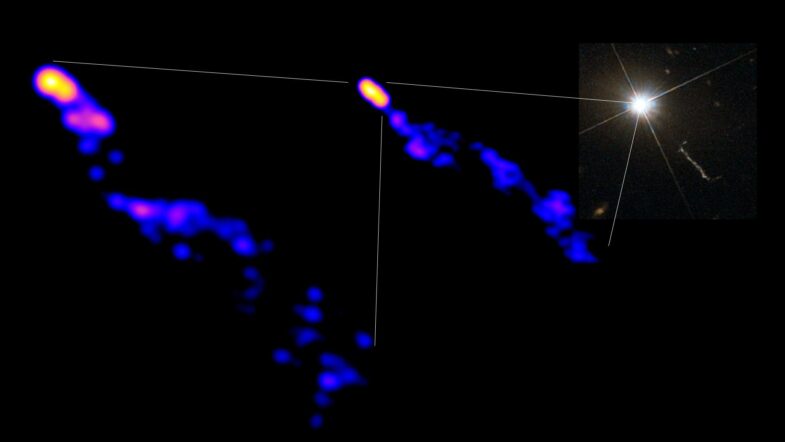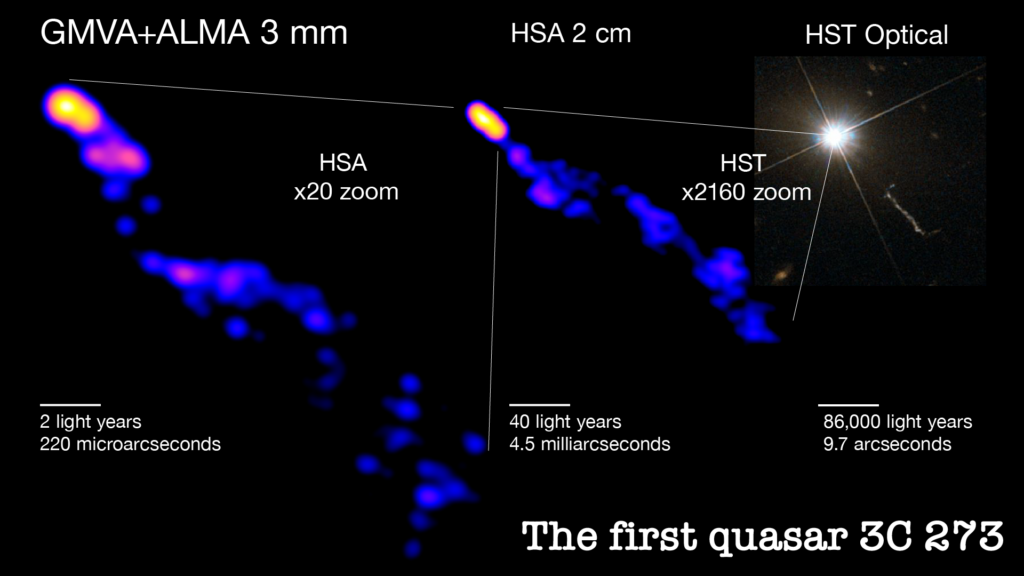
International team of scientists observes innermost structure of quasar jet
An international group of scientists has published new observations of the first quasar ever identified, known as 3C 273 and located in the Virgo constellation, that show the innermost, deepest parts of the quasar’s prominent plasma jet.
Active supermassive black holes emit narrow, incredibly powerful jets of plasma that escape at nearly the speed of light. These jets have been studied over many decades, yet their formation process is still a mystery to astronomers and astrophysicists. An unresolved issue has been how and where the jets are collimated, or concentrated into a narrow beam, which allows them to extend to extreme distances beyond their host galaxy and even affect galactic evolution. These new observations are thus far the deepest into the heart of a black hole, where the plasma flow is collimated into a narrow beam.
This new study, published today in The Astrophysical Journal, includes observations of the 3C 273 jet at the highest angular resolution to date, obtaining data for the innermost portion of the jet, close to the central black hole. The ground-breaking work was made possible by using a closely coordinated set of radio antennas around the globe, a combination of the Global Millimeter VLBI Array (GMVA) and the Atacama Large Millimeter/submillimeter Array (ALMA) in Chile. Coordinated observations were also made with the High Sensitivity Array to study 3C 273 on different scales, in order to also measure the global shape of the jet. The data in this study were collected in 2017, around the same time that the Event Horizon Telescope (EHT) observations revealed the first images of a black hole.

For the full story on this research, please see the MIT News article.